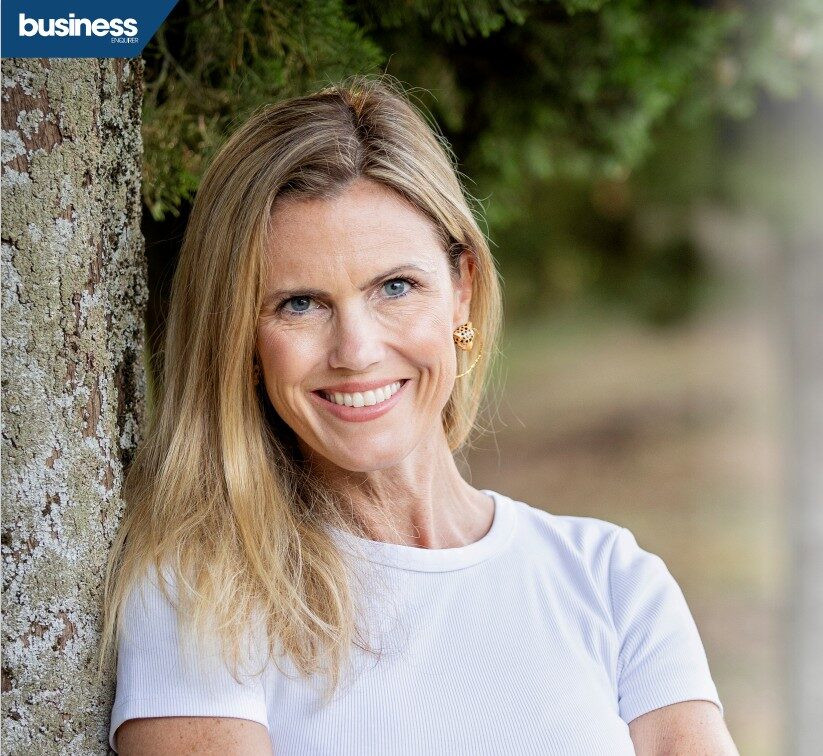Climate Transformed’s Rupert Rowling interviews SCB CEO Kevin McGeeney on his views of the Voluntary Carbon Market (VCM).
Rupert: Kevin thanks for taking the time to join us today. SCB was founded in 2006 and is the world’s leading low-carbon brokerage. SCB has offices in Switzerland, the US, the UK, and Singapore. You’ve gone to see the climate crisis at first hand with expeditions to the North Pole, just shy of the South Pole and to diverse countries such as Senegal and Haiti. Glad to have someone on the show who practices what they preach.
Rupert: What role do you see carbon markets playing in regards to net zero?
Kevin: Achieving carbon neutrality through the use of offsets is part of the journey towards net zero. Removing carbon out of a company supply chain is going to take the 30-40 years that we’re targeting for net zero. Along the way, companies should feel responsible to much-more-quickly achieve carbon neutrality through the use of offsets. What will that do? That will provide extremely valuable funding for LDC renewable energy projects, technologies that have yet to be developed, provide funding for those technologies. Without that funding, the attainment of net zero isn’t going to happen.
The VCM, you have different types of technologies, you can compare them by looking at their technology, their geography, their vintage. Those are the three basic ways of looking at it. You can make it more complicated. Each of the technologies – renewable energy, hydro, small-hydro, wind, solar – you could have a waste-recovery carbon credit; a community carbon credit, such as providing cook stoves to rural communities or clean water filters for rural communities. You can have a nature-based solution carbon credit, and within nature-based solutions there are many sub-stratas, and then, again, by geography. If you map it all out on an Excel sheet you’ll end up with thousands of different types and they will have certain similarities with one-another, but each one is going to be unique unto itself.
In the corporate bond market, large companies issue bonds and there are certain similarities within the sectors of those bonds, from an industrial company, from a utility. But ultimately, whether you’re going to get paid back, or paid your interest rate and paid back, is down to that individual company. When you make a purchase of a corporate bond, your risk is going into that individual company. When you make a purchase of voluntary carbon to achieve carbon neutrality, it’s going into that individual project. And it warrants some due diligence into the nature of the project. The VCM, the transparency it operates at is tremendous already. The level of detail available online for free is just astonishing on each individual project.
Rupert: How much of a problem is greenwashing in the industry and are we going the right direction on it?
Kevin: Remember 15, 16 years ago when we were starting, the attacks on the low carbon market place came from the climate change deniers. Those were the rock-throwers into the environmental markets community. Then it shifted. The number of climate change deniers dwindled. And it became clear that the media and society wasn’t buying their schtick. But the rocks kept coming in, the rocks started coming in from the ‘You’re not green enough’ community. And that’s where they rain down on now. It’s very easy for someone to suggest ‘This isn’t green enough. The bit you’re doing for the environment from whatever you’re doing in your carbon credit, it’s not enough’. To suggestions of greenwashing, that is always the claim, what you’re doing is not enough.
We see the benefits of incremental change, if a company was doing one thing one year and it gets highlighted, well maybe then the next year they’ll do incrementally better. But the notion that every company, even every public company can go from completely ignoring the externality of their environmental footprint to eliminating it immediately is complete nonsense. Companies should be afforded the opportunity to arc in the right direction and be applauded for the moves they do make and it’s that, that will see us through. I encourage the environmental community to do more applause and throw less rocks.
Rupert: You would prefer shareholders to take an active position – one of the things the investment community has to position is, say for the largest companies Shell and BP. On the one hand they are the largest fossil fuels extractors and burners. On the other hand, they’re one of the largest investors in green renewable energy, charging points etc. From the sounds of it, if you’re a potential investor, or an existing investor, in most cases say though a passive pension fund, you’re better off being invested in that company and shouting from within to effect change, than to leave and throw bricks from the outside?
Kevin: Absolutely. If we’re going to achieve meaningful climate goals, we’re going to need everyone involved, so, stay inside the tent. If we push people out and push them down a path of restricted funding, only being able to be funded through certain sources, then they can begin to become completely untethered from our climate goals. The companies you’ve mentioned, they’ve done wonderful things. Let’s applaud those and let’s also say, “what’s more, what are you going to do next year that’s better? Show us your plan, show us how it’s going to arc to the conclusion we want”, and then we’ll appreciate the things you do along the way.
Rupert: Do you feel that the current carbon prices, particularly on the VCM are massively under-priced to generate that capital for these projects around the world?
Kevin: The VCM is massively under-priced. It’s one of those market situations where, you look at all the commitments that companies have made, and then you realize that with the current projects, the maximum number of credits in the VCM that come out per year is about 500m tonnes. Global emissions are 52 billion tonnes, they all track to companies. One hundred companies have a hand on 75 percent of all emissions. If they are all tracking to carbon neutrality – and if you look at their public statements, they kind of are – that’s not going to add up. To look and see that the VCM prices are extremely low, artificially low, that’s not going to add up.
Looking at it objectively you’re going to have to say that those prices are going to rise. And they need to, to be able to fund the more difficult projects. The easier projects get funded first. The more difficult projects are going to require higher carbon prices.
Additionality is a criteria in the development of a carbon project. Would this project have happened if it was not for money coming from the carbon credits? If you had a project that under normal circumstances – a renewable energy project in a lesser-developed country – if the current economics were that it was going to break even, then the private sector won’t do it. If you add in some potential profit from selling carbon credits, you’ll get the return on the project to the point that the private sector will say ‘Yes, we’ll do it now’.
If you had a wind project by the sea with very high wind speeds, by a large population center, that’s going to get done first than an in-land, hard-to-get-to – yes there’s a large population center but they’re living in extreme poverty, and the electricity price they can afford to pay is extremely low – that project is not going to get funded first. That project is going to need a much higher carbon price.
Rupert: I guess the solar and wind energy sectors are proof of market-in-action. We’ve seen the cost of solar and wind come down spectacularly – the cost of production, that is. And it can be subsidy-free in lots of markets.
Kevin: The large VCM registries, such as Verra and Gold Standard, they will no longer register a renewable energy project outside of a developing country (LDC). Which makes sense.
Do you see carbon markets becoming more joined up? At the moment we’ve got a very segregated compliance sector approach where you’ve got EU ETS, EU ETS, UK ETS, different states in the US have their own, some nascent projects in Korea, New Zealand, and others. Do you see that rolling out and becoming a globally adopted emissions trading scheme?
Kevin: I don’t, no. I think the context is these markets need to stay within their jurisdictions. Governments involved – they could be the EU markets, or a more localized market – have to understand their local conditions.
If you create a benchmark, if you create a fungible price, it will adopt the characteristics of the cheapest thing to put into that basket. And once the cheapest thing has gone it will just go to the next cheapest thing. If you’ve created a huge global fungible market it will distort where the capital goes. The capital will always rush to the cheapest thing to do, as you build up to the more expensive things to do. To break it up by region will mean that we move faster as a society to reduce our emissions.
Rupert: In terms of a VCM you would prefer a segregated market as well? I would have though a benchmark on track makes your lives easier?
Kevin: It might make it easier but I don’t think it serves the mission. As a former investment banker, I would describe the VCM as a bit like the corporate bond market. You don’t have corporate bond futures because the only one that would get delivered is the cheapest one.
In the VCM there are Sustainable Development Goals, that are attached to each credit, there is so much rich and important detail on each project that they don’t lend themselves in my opinion to being treated as a fungible block.
Rupert: You would be resistant to those markets going down the exchange route you would prefer them to be bespoke OTC products?
Kevin: There is a place for the exchange futures that exist and probably more that will come. There’s definitely a place for that, especially for hedging purposes. But for an individual company that’s looking for a path to carbon neutrality that matches their values, their goals, that is not something that is a fungible credit. That’s something that they have to spend some time on and analyze.



